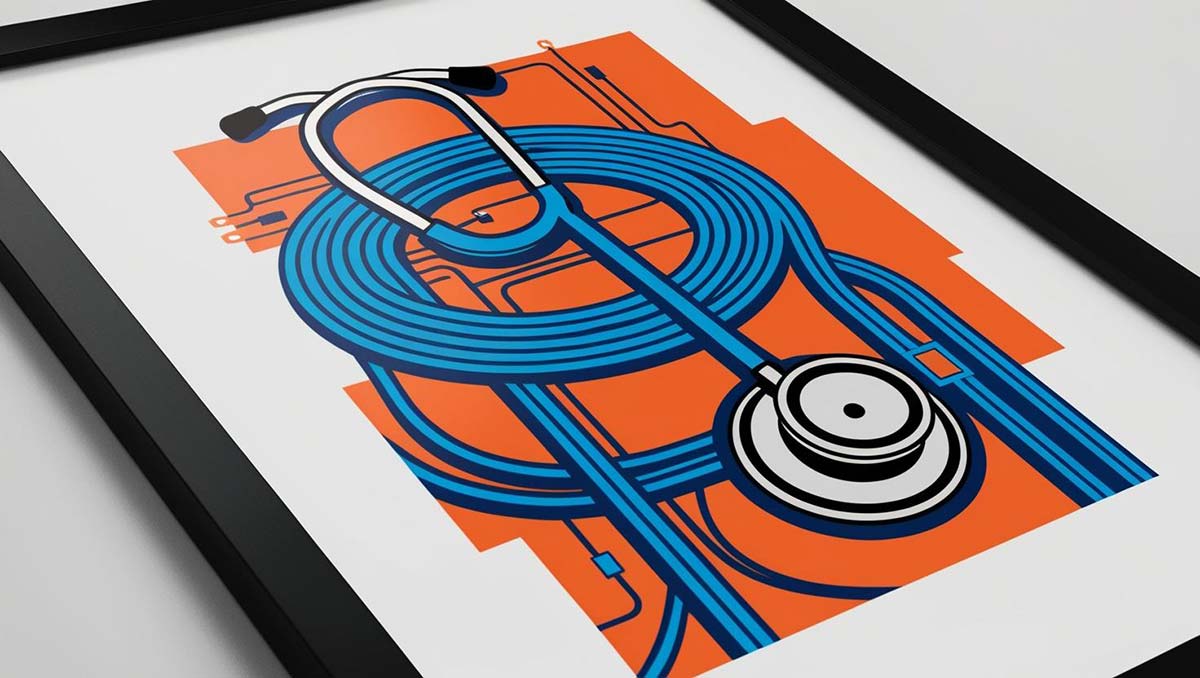If your website isn’t delivering the results you want, it’s time to make some changes.
 Your healthcare website is often the first point of contact between potential patients and your practice. It’s not just a place where people can find your contact information—it’s a powerful tool that can help attract patients and grow your business.
Your healthcare website is often the first point of contact between potential patients and your practice. It’s not just a place where people can find your contact information—it’s a powerful tool that can help attract patients and grow your business.
In this article, we’ll explore 10 essential features every healthcare website needs to succeed. From the basics like speed and accessibility to more advanced features like online booking systems and patient testimonials, these elements are crucial for creating a website that stands out and helps you attract patients.
1. Fast Loading Speeds: The Key to First Impressions
When it comes to your healthcare website, speed is critical. In fact, studies show that 53% of mobile users will leave a page if it takes longer than three seconds to load. That’s a lot of potential patients lost before they even had a chance to learn about your services.
A slow healthcare website doesn’t just frustrate visitors—it can also hurt your search engine rankings. Google rewards fast websites with higher rankings, making speed an essential factor in SEO and in attracting patients. If your healthcare website is slow, it’s time to invest in improving load times.
To speed up your healthcare website, consider optimizing images, reducing the number of plugins, and utilizing caching. A fast, responsive website will not only improve the user experience but also help attract patients by ranking better in search results.
2. Mobile Responsiveness: Patients Accessing On-the-Go
These days, most people browse the internet on their smartphones. For healthcare websites, this means your site needs to be mobile responsive. A mobile-friendly healthcare website ensures that potential patients can access your services, book appointments, and get in touch with you—whether they’re at home or on the go.
A mobile-responsive healthcare website is essential for attracting patients who are looking for information on their phones. If your site doesn’t function well on mobile devices, you risk losing a large portion of potential patients. Make sure your site adapts seamlessly to any screen size, whether it’s a desktop, tablet, or mobile phone.
3. Clear, Easy Navigation: Finding What They Need Fast
A clear, easy-to-navigate healthcare website is essential for a positive user experience. When patients visit your site, they need to quickly find the information they’re looking for—whether it’s about the services you offer, your office hours, or how to book an appointment. If they can’t find this information quickly, they’re likely to leave and look elsewhere.
Ensure your healthcare website’s navigation is simple and intuitive. Organize content logically, with clear menus and easy-to-read text. Include a search bar so visitors can quickly locate specific information. The easier it is for patients to navigate your website, the more likely they are to stay on the page and book an appointment, helping you attract patients.
4. Online Appointment Booking: A Must-Have for Convenience
The days of playing phone tag with potential patients are over. Today’s patients expect the convenience of online appointment scheduling. By integrating an online booking system into your healthcare website, you make it easy for patients to schedule appointments at their convenience.
Offering an easy-to-use online booking feature on your healthcare website not only makes the process more efficient for your patients, but it also frees up your staff from answering phone calls and scheduling appointments manually. The more convenient you make it for patients to book with you, the more likely they are to follow through—and the more likely your healthcare website will help you attract patients.
5. Accessible Contact Information: Be Reachable at All Times
atients need to know how to reach you, and they need to be able to find that contact information easily. Your healthcare website should prominently feature your contact information, including phone numbers, email addresses, and an interactive map that shows your office location.
Additionally, include a contact form that allows potential patients to reach out with questions or appointment requests. Make sure your contact details are easily accessible from every page of your website. By ensuring that patients can quickly find ways to contact you, you increase your chances of engaging with them and ultimately attracting patients.
6. Patient Testimonials and Reviews: Building Trust Online
ealthcare is a highly personal and trust-driven industry. When patients are searching for a new doctor or healthcare provider, they often turn to online reviews and testimonials to help make their decision. Patient testimonials can be one of the most powerful tools on your healthcare website for establishing credibility and trust.
Feature positive testimonials from patients on your website to showcase the quality of care you provide. Include real patient stories (with their permission) to give potential patients a better sense of what it’s like to receive care at your practice. Highlighting patient success stories is a great way to attract patients by building trust with your online audience.
7. Clear Calls-to-Action (CTAs): Guiding Patients Through Their Journey
call-to-action (CTA) is a prompt that encourages patients to take the next step, whether it’s scheduling an appointment, contacting your office, or learning more about your services. Your healthcare website should feature clear, prominent CTAs throughout the site to guide patients toward these actions.
Effective CTAs on your healthcare website could include buttons like “Schedule Your Appointment Now”, “Contact Us for More Information”, or “Book Your Consultation Today”. By strategically placing these CTAs throughout your site, you make it easy for patients to engage with your practice and take the next step in their healthcare journey, helping you attract patients.
8. ADA Compliance: Accessibility for All Patients
aking sure your healthcare website is accessible to all patients—including those with disabilities—is not just a good practice, it’s also required by law. An ADA-compliant healthcare website ensures that people with disabilities can easily navigate your site and access the information they need.
ADA compliance includes features like text-to-speech options, alternative text for images, and proper contrast between text and background colors. Ensuring that your website is accessible will not only help you reach a broader audience but also demonstrate that you care about providing equal access to all patients, which can help you attract patients.
9. Search Engine Optimization (SEO): Helping Patients Find You
Your healthcare website might look great, but if no one can find it, it’s not serving its full purpose. Search Engine Optimization (SEO) is the process of optimizing your website so that it ranks higher on search engines like Google. When people search for healthcare providers in your area, you want your website to show up at the top of the results.
Use relevant local SEO strategies for your healthcare website, including optimizing for location-based keywords (e.g., “family doctor in [city]”) and using schema markup to help search engines understand the content of your site. By improving your healthcare website’s SEO, you increase the chances that potential patients will find you online and ultimately choose your practice, helping you attract patients.
10. Clean and Professional Design: Creating a Trustworthy Online Presence
First impressions matter, especially in healthcare. A clean, modern, and professional design not only makes your website visually appealing but also reflects the quality of care your practice provides. If your website looks outdated or cluttered, potential patients might think your practice is out of touch or unprofessional.
Focus on a simple, intuitive design with easy-to-read fonts, a cohesive color scheme, and high-quality images. Your healthcare website should look polished and trustworthy to make patients feel confident about choosing your practice for their healthcare needs.
Ready to Upgrade Your Healthcare Website?
Your healthcare website is more than just a digital business card—it’s a powerful tool that can help you attract patients and grow your practice. By incorporating these 10 essential features, you’ll create a website that provides an excellent user experience and builds trust with potential patients.
If you’re ready to take your healthcare website to the next level, contact Sequent Creative today. We specialize in designing healthcare websites that not only look great but also help attract patients. Let us help you create a website that reflects the quality of care you provide.




